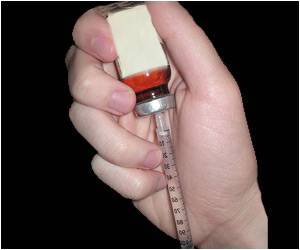Lanadelumab exceeded the turnover threshold for the simplified orphan drug assessment. The analyses carried out instead are unsuitable for the proof of an added benefit.

‘Due to a lack of suitable study data, an added benefit of lanadelumab compared with the appropriate comparator therapy is not proven’
Read More..




Therefore, the German Institute for Quality and Efficiency in Health Care (IQWiG) investigated on behalf of the G-BA whether treatment with lanadelumab for routine prevention of recurrent attacks of hereditary angioedema, compared with routine prevention with C1 esterase inhibitor, offers an added benefit to patients aged 12 years and older.Read More..
The conclusion: Due to a lack of suitable study data, an added benefit of lanadelumab compared with the appropriate comparator therapy is not proven.
Rare hereditary disease
Hereditary angioedema is a rare hereditary disease that can be caused by a variety of mutations and whose symptoms usually appear in childhood or adolescence: It is characterized by recurrent swelling of the skin or the mucous membranes because too little or no functional C1 esterase inhibitor is produced due to a genetic defect.
In healthy people, this inhibitor prevents excessive formation of the peptide bradykinin, which increases blood vessel permeability. As a result of this increased permeability, too much fluid leaks from the blood vessels into the tissue, leading to angioedema. Especially in the airways, this swelling can be life-threatening.
Advertisement
In addition to acute therapy used to terminate ongoing attacks as quickly as possible, long-term prophylaxis is an option for patients with frequent attacks. In the past, concentrates of the missing inhibitor were injected into the bloodstream; since 2020, there has also been an inhibitor concentrate for subcutaneous administration.
Irreparable structural differences
Although the monoclonal antibody and the C1 esterase inhibitor, which has been used for long-term prophylaxis for many years, are from the same manufacturer, there is no study that directly compares the two drugs.
A placebo-controlled study, in which participants in the lanadelumab arms had fewer attacks than in the placebo arm, was sufficient for the approval of lanadelumab.
In the early benefit assessment, however, greater benefit or lesser harm must be proven in comparison with the appropriate comparator therapy, which is determined by the G-BA. Therefore, in its dossier, the manufacturer tried to conduct a retrospective comparison of individual patient data from three studies on lanadelumab and the C1 esterase inhibitor.
The study acronym of this retrospective comparison, PATCH, hints at what the manufacturer was trying to do: a “correction” or “repair” of the fact that in non-randomized comparisons one cannot be sure whether all relevant confounders that may influence the result of an intervention are randomly distributed among the arms. Because only then is a comparison fair.
To do this, one must first determine all relevant confounders such as the health status of the study participants, the severity of their disease, or the type of their pretreatment. If both therapies have a similar probability of being an option for both groups (sufficient overlap), an adjustment is made for these relevant confounders.
Only if the overlap reaches a predefined extent can the data from the different studies be compared with regard to patient-relevant outcomes such as the number of attacks – and thus, for example, an added benefit can be determined.
However, the PATCH study is not suitable for this because the analysis of the overlap shows that the therapies being compared did not have the same probability of being an option for the groups.
The structural differences between the groups were therefore per se too serious for adjustment. Furthermore, it remains unclear whether the manufacturer identified all relevant confounders. And even for the confounders identified by the manufacturer, its data sets do not contain the information necessary for an adjustment.
Apples and oranges
The manufacturer also recognized this – and therefore subsequently resorted to another method: an adjustment by means of regression analysis. However, this method did not solve the basic problem of massive structural inequality.
“The manufacturer itself recognized in the first step that it was obviously comparing apples and oranges. But instead of drawing the necessary conclusion from this and acknowledging the lack of suitability of its data, it switched to a method that apparently turns apples and oranges simply into fruit," says Thomas Kaiser, Head of IQWiG’s Drug Assessment Department.
“This example shows once again that the fictitious added benefit initially established for orphan drugs is often not tenable on closer examination. It would therefore make sense in the future to also fully assess such drugs from the outset.”
G‑BA decides on the extent of added benefit
The dossier assessment is part of the early benefit assessment according to the Act on the Reform of the Market for Medicinal Products (AMNOG) supervised by the G-BA. After publication of the dossier assessment, the G-BA conducts a commenting procedure and makes a final decision on the extent of the added benefit.
Source-Eurekalert







